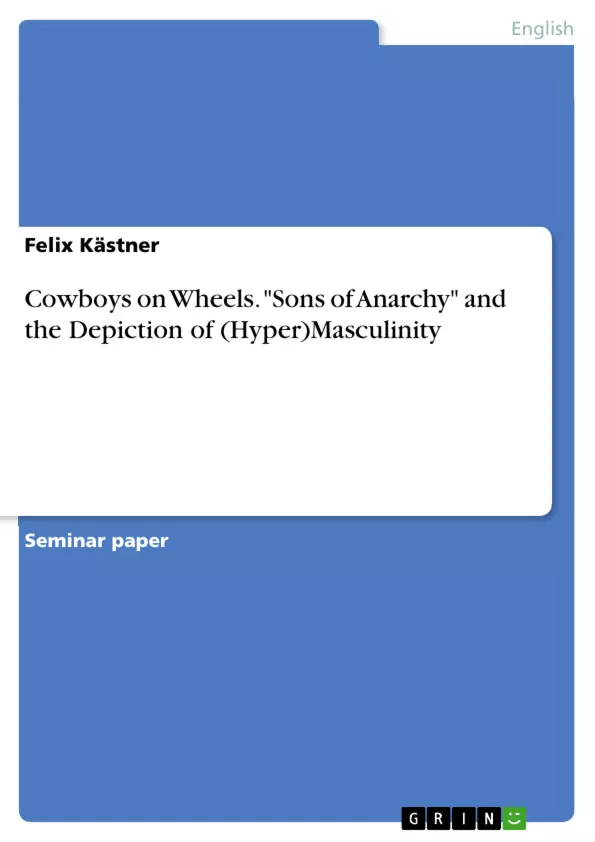"Sons of Anarchy" has been the most successful TV programme of the cable network channel FX since its premiere in September 2008. Having attracted a lot of viewers, the drama series about an imaginary motorcycle club can certainly be regarded as another example of what Nussbaum calls "television's most esteemed category: the sophisticated cable drama about a patriarchal subculture". Due to its success, it can be assumed that the series also has a certain amount of cultural impact. One of the most remarkable and characterising features in "Sons of Anarchy" is certainly its representation of gender roles, especially of hypermasculinity, which undoubtedly has become
rather unusual in contemporary TV series. Since masculinity and its depictions can never be looked at in isolation, but only by comparing or contrasting it to depictions of femininity, there will be an analysis of both gender roles in this paper. However, since the series is about a motorcycle club whose members are male, the main focus will be on the representation of masculinity in SOA.
This paper argues that SOA portrays hypermasculinity in a way which, although on the one hand being very old-fashioned, if not outdated, on the other hand still is very likeable and even attractive for its audience. The main question that will addressed is thus the following: How are gender roles represented in SOA and by which means is that achieved?
Inhaltsverzeichnis (Table of Contents)
- Introduction
- Gender roles in Sons of Anarchy
- The depiction(s) of (hyper)masculinity
- The Credits
- The Club
- Audiovisual representations of (hyper) masculinity
- Representations of hypermasculine behaviour
- The depiction of femininity
- The depiction(s) of (hyper)masculinity
- The cultural work of SOA - between post- and post-post 9/11 masculinity?
- Conclusion
Zielsetzung und Themenschwerpunkte (Objectives and Key Themes)
This paper aims to analyze the representation of gender roles in the popular television series Sons of Anarchy (SOA). The primary focus is on the depiction of hypermasculinity, examining how the series portrays this concept through various elements like the characters, setting, and narrative. The paper also explores the cultural impact of SOA, particularly its connection to the concept of "post-9/11 masculinity."
- The depiction of (hyper)masculinity in Sons of Anarchy
- The role of the motorcycle club in shaping masculine identity
- The interplay between masculinity and femininity in the series
- The cultural impact of Sons of Anarchy and its connection to "post-9/11 masculinity"
- The use of formal and narratological elements to convey gender roles
Zusammenfassung der Kapitel (Chapter Summaries)
The introduction provides an overview of the series, highlighting its popularity and its significant cultural impact. It introduces the concept of hypermasculinity and its representation in contemporary television series. The paper focuses on analyzing the depiction of gender roles in SOA, particularly the portrayal of hypermasculinity, and its connection to "post-9/11 masculinity."
Chapter 2 delves into the depiction of gender roles in SOA, starting with an exploration of hypermasculinity. It examines different levels of masculinity representation, including the credits sequence, the motorcycle club, and audiovisual representations. The chapter also analyzes how hypermasculine behavior is portrayed in the series.
Schlüsselwörter (Keywords)
The paper explores key concepts such as hypermasculinity, gender roles, "post-9/11 masculinity," motorcycle culture, television series, and cultural impact. It analyzes the representation of these concepts in the context of the television series Sons of Anarchy, drawing on theoretical frameworks and critical perspectives.
- Quote paper
- Felix Kästner (Author), 2013, Cowboys on Wheels. "Sons of Anarchy" and the Depiction of (Hyper)Masculinity, Munich, GRIN Verlag, https://www.grin.com/document/298406



